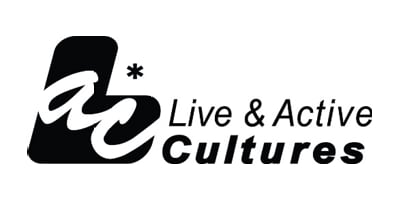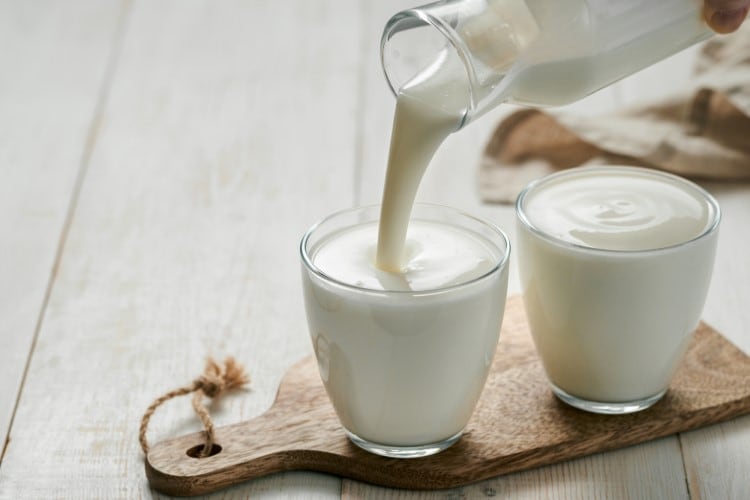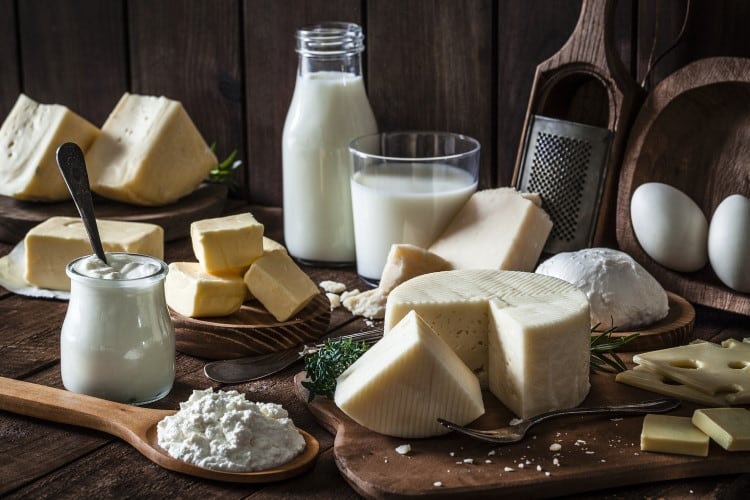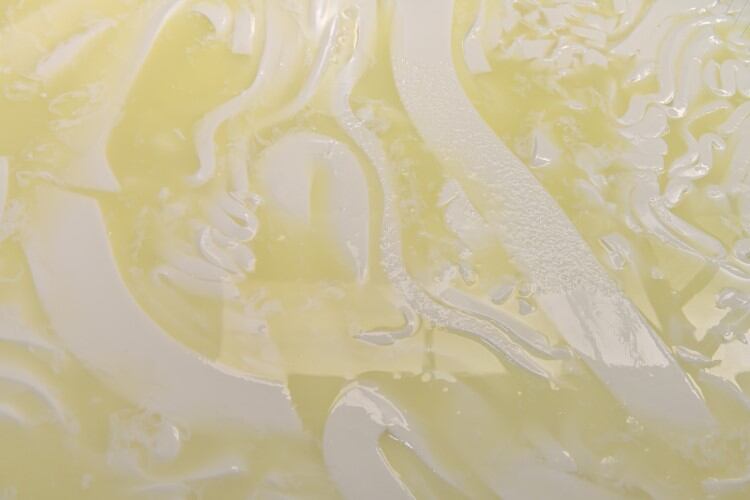Americans consumed five times more yogurt in 2021 than they did 40 years ago, according to USDA data released last February. Globally, yogurt sales and volumes grew from 2021 to 2023 at a similar rate to that since 2010, highlighting the category’s continued relevance1.

While ‘source of protein’ claims have been increasingly popular with cultured dairy brands – 42% of new yogurt releases in North America featured a ‘high source of protein’ claim, according to Innova Market Insights data from December 2022 – gut health benefits remain a major driver in purchasing behavior.
According to a 2021 survey of consumers by the International Food Information Council2, two thirds (67%) of consumers believe a product containing live and active cultures is better for them, and one in four (25%) shoppers said digestive and gut health was these products’ most desired benefit.
Measures aimed at informing consumers about what dairy products are a source of probiotics have been bolstered through the Food and Drug Administration’s new definition of yogurt. The standard mandates that products with at least 10 million cultures per gram of product can carry a ‘live cultures source’ label claim – but that’s the minimum level supported by science where the presence of beneficial bacteria can prevent symptoms of lactose intolerance or maldigestion.
According to US trade body the International Dairy Foods Association (IDFA), brands that offer an even higher probiotics content stand a better chance to appeal to consumers who seek the gut health benefits of cultured dairy.
In a bid to offer manufacturers another way to differentiate in the crowded dairy aisle - and help consumers identify products that are verifiably rich in probiotics - IDFA has re-launched its Live & Active Cultures (LAC) seal.
The seal was previously available to fewer product categories but has now been extended to all yogurt and cultured dairy products that contain at least 100 million cultures per gram – 10 times more than the FDA-mandated minimum recommendation. An exception applies to frozen yogurt, which must contain at least 10 million yogurt cultures per gram at the time of manufacture. In addition, the LAC seal may also be granted to yogurt-based or dairy-based products that do not meet the FDA yogurt standard of identity, as long as the product is made through fermentation with both Lactobacillus delbrueckii subsp. bulgaricus and Streptococcus thermophilus.
Responding to DairyReporter enquiries about the minimum CFU requirement – and the scope to confuse rather than inform consumers because of it - IDFA’s Matt Herrick told us: “The LAC seal promotes a standard that is 10 times higher than the FDA minimum, providing greater assurance to individuals who experience lactose intolerance or maldigestion. This should not create any confusion, as yogurt makers can promote that products carrying the LAC seal may be more easily tolerated by such individuals compared to yogurts that do not carry the seal.”
Why label claims matter
Cultured dairy, and particularly yogurt, is closely associated with gut health benefits by consumers – but few may know that not all yogurt contains beneficial bacteria. For example, yogurts made from UHT milk do not contain probiotic cultures. According to Herrick, most yogurt on the US market do contain live cultures – and FDA products that do not must explicitly mention this on pack.
Asked if US consumers know that not all yogurt has live cultures, Herrick said: “I doubt most consumers understand that some yogurts are heat-treated to provide longer shelf life. The vast majority of yogurts in the market today are not heat-treated in this way and do contain live and active cultures.
“Under the new FDA standard, the phrase 'does not contain live and active cultures' must be included on the package if the dairy ingredients have been treated after culturing to inactivate viable microorganisms.
“This means that products that are heat-treated and don’t contain live and active cultures now have to label this. All of this underscores the value of the LAC seal to consumers.”
How to apply
To obtain a LAC seal, manufacturers must test a sample of their product at an independent laboratory to determine if the product meets the certification criteria. Laboratories must have ISO/IEC 17025 Biological Accreditation for microbiological analysis in food, or be state or USDA-certified. The product sample must be of a product as it appears at the time of manufacture.
Applying for the LAC seal is free to IDFA members, but non-members face a fee of $5,000 per application for each product line, plus any costs associated with lab testing.
Explaining more about the application process, Herrick said: “We’re reaching out to yogurt makers via our membership communications and the media to encourage companies interested in learning more about the LAC seal to contact IDFA.
We will connect companies to our resident expert, John Allan, [who] then works with companies to have product samples tested by an independent laboratory.
“The results are then submitted and reviewed by IDFA to ensure the minimum levels of live and active cultures are present, and products meet all other criteria.
“We encourage companies to visit our website, review the full application process and criteria that they must meet to qualify for the seal, and download the LAC Seal Procedures and Guidelines.”
An ’exciting time’ for the segment
Whether investing in what IDFA says is ‘the only widely recognizable, independent verification’ that a dairy product contains significant levels of live and active yogurt cultures is down to each manufacturer.
Yogurt brands, for example, can already leverage a qualified health claim linking yogurt to a reduced risk of type-2 diabetes without the financial outlay of testing their product or applying for third-party certification. But for those companies that wish to promote the high probiotic content of their fermented dairy products through an independently-verified label claim, investing in certification could make better sense.
At any rate, the segment is 'looking strong', Herrick said.
“We continue to see the yogurt and cultured segment beat industry analyst expectations the past few years,” he told us. “Per capita consumption of yogurt in the United States continues to look strong.
“I expect the recent decision from FDA allowing the first-ever qualified health claim for yogurt, recognizing a potential link between regular consumption of yogurt and a reduced risk of type-2 diabetes, to be a boost for product sales because it validates what consumers already believe about the health attributes of yogurt and cultured dairy foods.
“We’re also seeing sour cream and cottage cheese start to break out and show their muscle, especially the latter with new fruit and flavor offerings. With so many consumers looking for healthy options, it is an exciting time for yogurt and cultured dairy products.”
Asked about the emerging formats, products and flavors in 2024, he added: “As I noted, this is an exciting time to be in the yogurt and cultured dairy space because consumers are branching out of traditional flavor profiles and demanding fruit, healthy inclusions, spice, sweet and sour flavors, and other options.
“At the same time, we’re seeing high protein and lower sugar options continue to generate excitement among consumers. Consumers still like options when it comes to milkfat content—full fat premium options and low- and non-fat options are all complementary. Like all packaged foods today, value is a driver for consumers, so we’re seeing lower-value items also elevate convenience, health and taste as differentiators for shoppers.”
Sources:
- Innova Market Insights, Category Insider: Global Trends in Spoonable Dairy and Non-Dairy Yogurt, December 2022.
- New Survey Shows Dairy Differences: 80% of Americans Age 55+ Consume Dairy Multiple Times a Week; A Third Under 55 Opt for Plant-Based Alternatives, https://ific.org/media-information/press-releases/new-survey-shows-dairy-differences/, Last accessed: 12 March 2024




